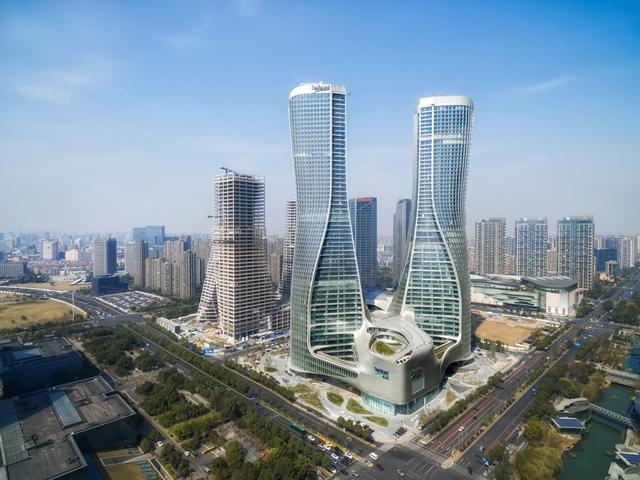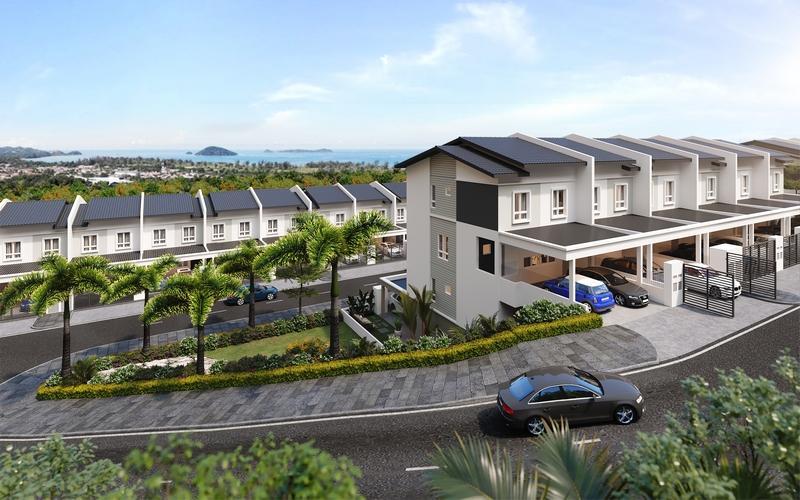An iconic building is one that captivates a city or even a nation.
Iconic buildings are most successful when there is a socio-cultural layer to their development, says Hannes Pfau, partner at UNStudio, an Amsterdam-based architecture company.
"The urban fabric of Kuala Lumpur has many examples of modernist architecture that have an added richness because they not only demonstrate quality design, but also respond to local climates and ways of life,” he said.
Pfau said, iconic buildings can benefit cities on multiple levels.
"The Petronas Towers in Kuala Lumpur are a stunning example. They are ageless. By having been the tallest towers in the world for six years, they brought a lot of attention to Kuala Lumpur and helped define it as a leading city in Asia,” he told NST Property.
Pfau said Kuala Lumpur embraces many different cultures and has grown into a city with a very exciting mix of traditional and modern, adding that this mentality is ideal for the development of new landmark projects.
“Culture is an extremely important parameter when it comes to the design of architecture. We as architects, should always do our best to address this in a respectful and tasteful way. Additionally, architecture is a reflection or reaction to an era, so it can never be isolated from history and culture. Modern architecture is strongest when it reflects the past and present, and even anticipates the future,” he added.
Pfau, who is also a director of UNStudio Asia, manages several large scale and high profile projects in China and Asia Pacific region, such as the Lyric Theatre Complex in the West Kowloon Cultural District in Hong Kong, as well as the Mercedes-Benz Museum in Stuttgart, Germany and the University of Music and Music Theater in Graz, Austria.
He hoped that the Lyric Theatre Complex will be a spectacular addition to the public buildings in Hong Kong.
For Pfau, the largest project that he had personally been involved in is Raffles City project in Hangzhou, China.
"This is a very good example of an integrated design approach that aims to reach the highest level of social, ecological and commercial sustainability," he said.
Working in Malaysia
On the services that UNStudio can provide for Malaysian companies, Pfau said, the scale of its projects ranges from large-scale urban plans, to architecture and interior design, to product design.
“Every scale and budget has its own challenges. We do strongly believe in customized design that caters to the very specific needs of our clients. To create something that is meaningful to the field of architecture, that further expands the capabilities of our practice and is the perfect solution for the client, that is always our goal. Personally, I enjoy designing a single family house just as much as a mega project,” he explained.
UNStudio is currently working with Vanke Malaysia, a subsidiary of Vanke Group from China, on a multi-billion ringgit mix-development project located at Bukit Nanas, Kuala Lumpur.
On this development with Vanke, Pfau said it will be one of the first projects for UNStudio in Malaysia.
"This project is of highest importance to us to respect the cultural and environmental context and to design a building that is a vanguard of sustainable and environmentally-friendly design.
"One of the questions we have been asked is how do we create a residential mixed-used building in the city centre where the residents can enjoy the natural greenery while at the same time make use of the offerings of an urban, centrally-located apartment.
"The goal would be to offer a lifestyle that places the quality of life and work-life balance at its core," said Pfau.
Architecture revolutions in Asia
On the revolutions in Asia in terms of architecture, Pfau said the interest and investment in design and architecture has been evident across Asia since they started working on projects in Asia nearly 20 years ago.
“Taking China for example, there has definitely been both a continued strong interest in drawi
ng international architectural influences into the country and nurturing the emerging architectural identities rising from within. The speed of architectural development across China is unprecedented,” he said.
Pfau said, other Asian countries such as South Korea, Japan, Singapore, and Malaysia have each found their distinct architectural identities during their own ‘eras of growth’, which have led to many great examples of risk-taking architecture and iconic works that have been embraced by the citizens as a part of modern society and culture.
_PH_Banner_(Desktop)(1200x180px).png)
.jpeg)
.jpg)

.jpg)




.jpg)
.jpg)
.png)

.jpeg)
.jpg)
